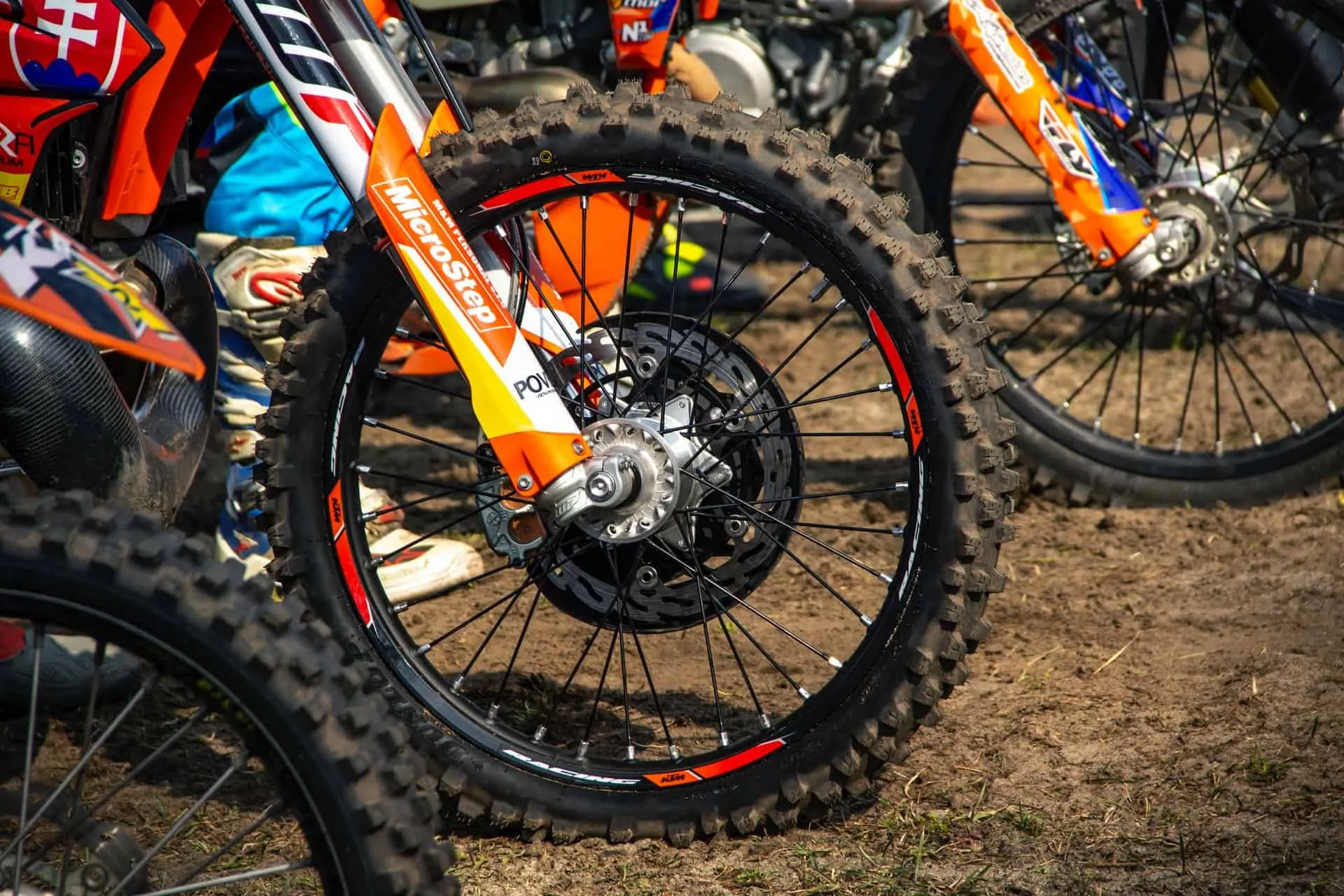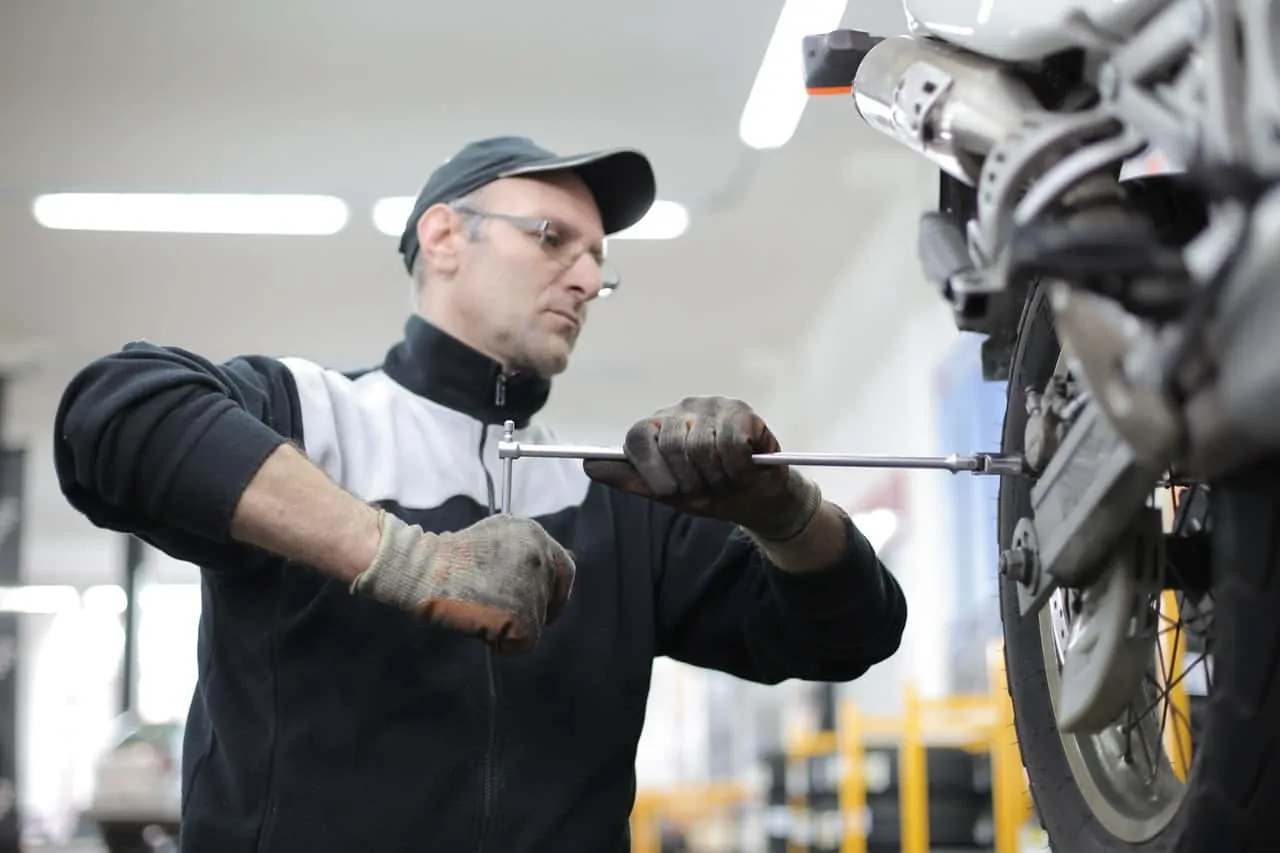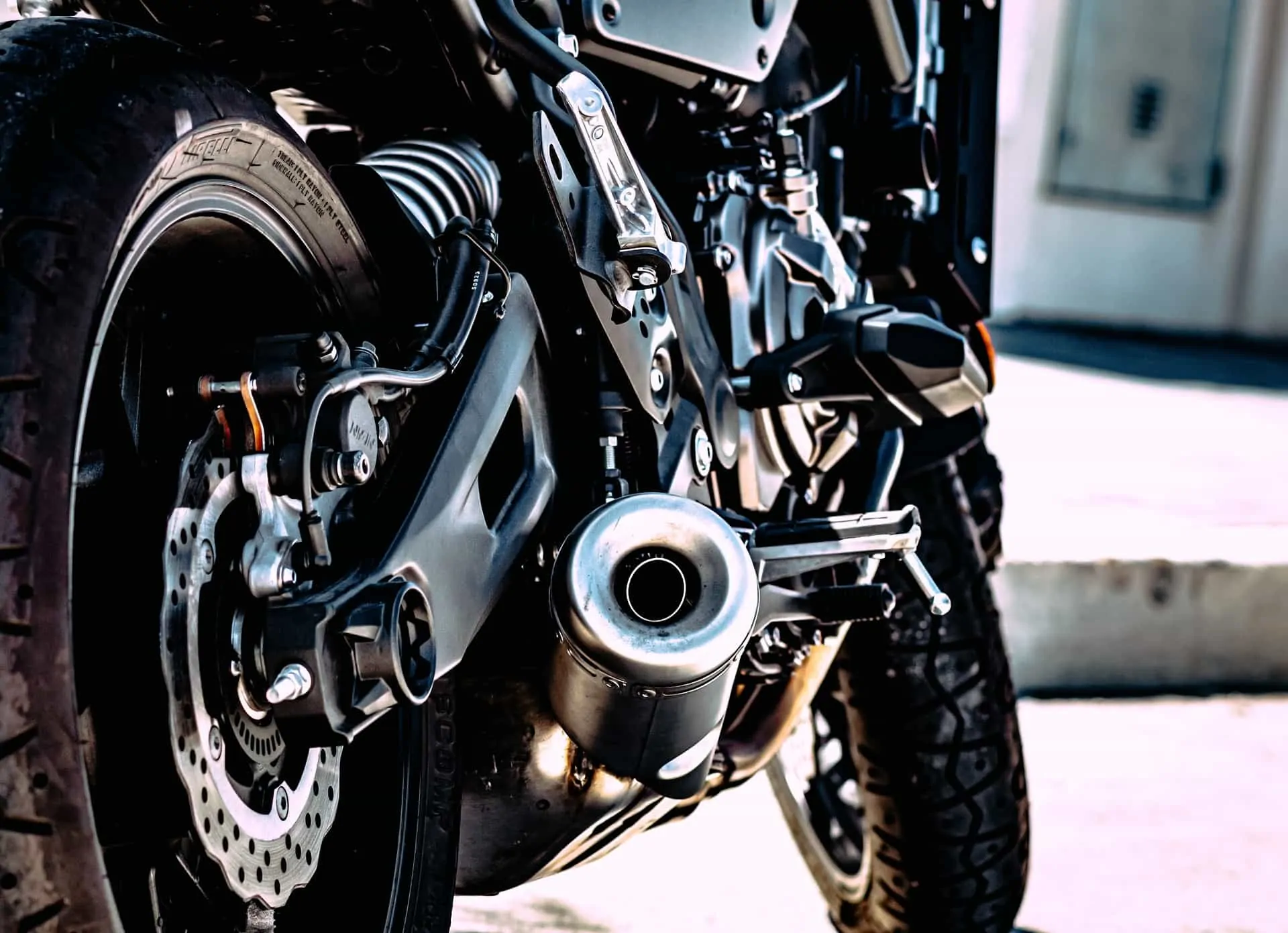Tire replacement is a necessary maintenance step to keep your motorcycle in top shape.
The signs that it’s time to change the tires include:
- The tread depth is already worn out
- The tires have reached their expiration date
- The physical features are altered (shape and structure)
- There are irreparable punctures
You can make the tires last longer by maintaining tire pressure, properly aligning the front and rear tires, keeping the motorcycle balanced, cleaning the tires correctly, storing the motorcycle correctly, practicing good braking habits, and consistently inspecting the tires for signs of wear and tear.
Signs To Change The Tires
Check The Tire Treads
Motorcycle tires have built-in tread wear indicators. These are rubber knobs that are located at least 1/32 inches or 0.8 millimeters deep into the tires. These indicators will get exposed over time when you frequently use your tires. Once they start showing, it’s time to replace your tires. Their appearance means there’s significant wear on your tires.
Expiration Date
Motorcycle tires have expiration dates which means that you will inevitably have to replace your motorcycle tires. Tire manufacturers recommend replacing your tires every five years. Other durable brands can last up to six to seven years.

This is because tires naturally lose their structural integrity over the years, whether they are constantly being used or just dumped in storage. The oils that bind the rubber components together will eventually evaporate, thus leaving the tires softer and more prone to damage.
Each and every motorcycle tire has its manufacture date printed as mandated by the Department of Transportation (DOT). There will be four digits printed at the side of every motorcycle tire. The first two digits correspond to the weeks while the last two correspond to the year. For example, if it says 1408, then it means it was manufactured during the fourteenth week of the year 2008. You’ll need to replace the tire by the fourteenth week of 2013.
Physical Features
Motorcycle tires are naturally durable and firm so it’s a very bad sign when its shape and structure are altered. These alterations are caused by overuse or problems with the motorcycle’s build.
A tire that is no longer round and is shaped more like an oblong means that the rear part of the motorcycle is heavier than the front part. Diagonal tread wears on the motorcycle tires may mean misaligned front and rear tires that you’ll need to adjust.
Other physical features to watch out for include a flapping or dragging tire carcass, exposed metal mesh, cupping, and scalping.
Irreparable Punctures
Punctures are inevitable because there will always be rough terrains or sharp debris. Some punctures are reparable while most are not. If the tires have too many punctures or cuts to the point that they are no longer able to retain the required air pressure, it is time to replace them.
Tips To Make Tires Last Longer
Practicing these tips will make your tires last longer and save your money in the long run. Instead of replacing your tires every few years, you can actually reach the 5-year mark before it’s officially required to replace them.
Maintain Tire Pressure
Tire inflation helps keep the motorcycle tires in top shape. Pressurized tires allow you to drive safely and efficiently. A deflated tire that is placed under a lot of pressure increases the heat, accelerates tread wear, weakens the tire’s ability to handle traction, and lead to serious damage.

The tire pressure should also fit the motorcycle specifications. Refer to the motorcycle manual for the proper tire pressure. Heavier models require higher tire pressure. An additional pound or two of tire pressure can also greatly help in traversing wet or slippery roads.
Proper Tire Alignment
Misaligned tires can cause damage to the rear tire by creating diagonal treads. Even the slightest degree of misalignment can shorten the lifespan of the tires.
To check for the tire alignment, take two straight objects like sticks or strings. Check if the rear tire is at the same alignment as the front tire. This minimizes wear because it prevents your tires from working against each other.
Balanced Motorcycle
An imbalanced motorcycle can harm your tires because of the uneven weight distribution. It is advisable to check the balance every 500 to 1000 miles of usage. The balance may also be off after the break-in period so check during the break-in.
Clean It Correctly
Tires need to be cleaned from time to time as they are exposed to dirt, dust, and caked mud. When cleaning, most tire manufacturers advise that it’s better to stick with mild soap and water. Strong soaps can damage the layers of the tires, making them more susceptible to punctures and abrasions.

Some tire soaps can also wash away the essential oils that bind the rubber molecules together. As a consequence, the tires become weaker. They lead to cracking and accelerated deterioration.
Clean the tires by using a diluted mild soap. Make sure to remove all the caked mud, especially in the treads. Wipe away any dribbled lubricant from the chains and oils from the brakes as these can damage the tires.
Proper Storage
Make sure to store your motorcycle in a clean, safe, and dry area. This will make the tires last longer as they won’t be submerged in mud or dirt. Keep the motorcycle in a shed or the garage. In the case of outdoor storage, use a waterproof motorcycle cover to protect the tires from rain. Some covers come with UV protection that helps protect the tires from sunlight.
Good Braking Habits
Aggressively braking is tough on motorcycle tires. Hard braking with locked tires will cause so much friction. This hastens the wear and tear. Panic braking has serious side effects so it’s very important to moderate the brakes and to do so gently.
It’s also deemed to be unhealthy to hard start or push-start the motorcycle at all times.
Constantly Inspect Your Tires
Regular checkups on your tires can help you spot problems before they escalate into more serious damages on your tires. Make it a point to look at the tires for small punctures, lodged objects, and more.
You should also watch out for deformities like cupping. Cupping makes the tire’s surface appear wavy and uneven. This is usually caused by incorrect tire inflation or a suspension problem. This may also be caused by a spring issue.
